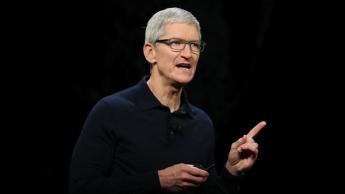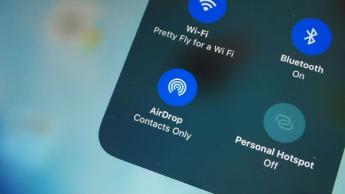EU urges Apple to open up iOS to competitors—why this could undermine innovation and user security
Compelling Apple to open iOS could put technological innovation in Europe at risk

The European Union is taking bold steps to create a more level playing field in the tech sector. Recently, the EU has called on Apple to open up popular features such as AirPlay and AirDrop to competitors, challenging the company's long-standing competitive advantage.
Since the introduction of the Digital Markets Act, the EU has established itself as a robust regulator, driving changes designed to benefit consumers across Europe. These measures include introducing a universal charging standard with USB-C and requiring Apple to permit the installation of apps from outside the traditional App Store – a process known as sideloading.
Many people support these changes, arguing that consumers should have greater choice and not be limited to a single app marketplace or proprietary charging cables. While Apple has complied with these regulations, the company has raised concerns about potential risks, particularly with regard to sideloading apps. So far, most iPhone users continue to rely on the trusted App Store for their downloads, which may explain why significant problems have yet to arise.
Some believe these changes mainly benefit the EU and certain software companies, rather than the wider user base. In the case of the switch to USB-C, it's likely Apple would have made this change eventually, but EU regulations have sped up the transition.
Open sesame
Recently, the EU demanding that Apple open up nine core iOS features. These include push notifications for non-Apple smartwatches, easier pairing between non-Apple headphones and Apple devices, as well as greater access to AirPlay and AirDrop. Specifically, the EU wants Apple to allow third-party solutions for features such as AirDrop and to ensure they work just as seamlessly as Apple’s own software.
Apple has expressed concern about these requirements, stating that increased regulation could slow innovation for users in Europe and require them to share new features for free with competitors who may not be bound by the same rules. Apple has also confirmed that discussions with the European Commission are ongoing to address these concerns.
To better understand the impact, let’s take AirDrop as an example.

Drop it like it's hot
AirDrop makes it easy to share files, photos and videos instantly between iPhones and other Apple devices. Introduced with iOS 7, this feature revolutionised file sharing by creating a direct, temporary network between devices. While AirDrop required a bit of learning at first—having AirDrop set to open could sometimes result in unexpected file transfers—Apple has since improved its controls to enhance user privacy and security.
At first, few people used AirDrop. However, it quickly became a favourite at gatherings, making it simple to share event photos with friends and hosts, who were often pleasantly surprised by its convenience.
For years, Android users lacked a similar tool, until Samsung introduced Quick Share and Google launched Nearby Share in 2020. These two features eventually merged into a unified Quick Share service, bringing seamless file sharing to the Android ecosystem.
Apple's innovation with AirDrop clearly influenced the development of similar solutions on other platforms. This is a great example of healthy competition driving technological progress. It's important to note that regulatory actions, such as those from the EU requiring Apple to open its platform to competitors, aim to create a level playing field—but they also raise questions about how much intervention is necessary when innovation is already pushing the industry forward.
Ultimately, competition encourages better products and services for everyone, but maintaining a balance between regulation and innovation is key for ongoing progress in the tech world.
Ecosystem FTW
Apple has created a seamless ecosystem that offers impressive benefits to users who embrace it. While this influences my choice of smartwatch and earbuds, for over 20 years, it didn't affect my laptop preference—I was a dedicated Windows user. Even though I used an iPhone, AirPods, and wore an Apple Watch, I saw no reason to switch to a MacBook.
When I finally made the switch, it was to see if I preferred macOS over Windows (spoiler: I did). I quickly discovered instant advantages, like AirDrop for easily sharing files between my iPhone and iPad.
Using all Apple products together makes everything simpler—not because of an unfair advantage, but because of thoughtful design and engineering. Some regulations aim to level the playing field by reducing these advantages, but that can take away from what makes the Apple experience unique. As a user, you invest in premium products, top-tier software, and smooth compatibility across devices.
Mixing and matching devices from different brands, like Apple and Samsung, can work well, and I appreciate products from Samsung, Google, OnePlus, and Microsoft. There's nothing wrong with a diverse tech setup, but choosing an all-Apple line-up should remain an option.
Regulators should focus on protecting consumers from genuine harm, not limiting innovation or user choice when no harm exists. Often, these rules start in Europe and spread globally—so changes in one region can affect users everywhere.
